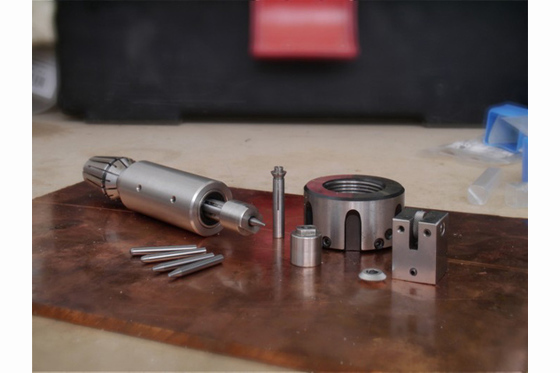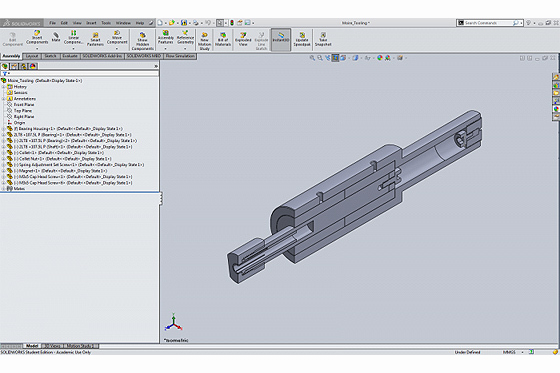The mezzotint process was developed by Ludwig von Siegen in 1642. Von Siegen is reputed to have noticed the way that pitted gun barrels could offset an image onto a cleaning rag. His first mezzotint, from 1642 was of Countess Amalie Elisabeth of Hanau-Münzenberg, the Landgravine of Hesse Cassel, and in a letter to her son William VI (the young cousin of Rupert of the Rhine, who is usually credited by John Evelyn and Horace Walpole with the discovery of mezzotint), Von Siegen included a proof of the print and revealed that he fully understood the importance of his printmaking innovation:
There is not a single engraver, a single artist of any kind, who can account for, or guess how this work was done, for, as your Highness well knows, only three methods of work are recognised as engravings, viz: first, engraving or cutting; second, biting with acid or etching; third, a method very little used, executed in small dots made with punches, but which is difficult and so arduous that it is seldom practised. My method of operation is quite different from any of these although one only notices small dots and not a single line; and if in some part the work seems to be done in hatching, it is notwithstanding, entirely dotted, which I would not wish to hide from Your Highness, who is so well versed in art.

At Factum Arte, mezzotint has not been treated as a dormant historical genre, but as a material process with tremendous scope for innovation and experimentation today, especially when combined with current technologies. This inclusive attitude towards different technologies, irrespective of their potential obsolescence, has enabled the innovation of entirely new methods of mark-making and has activated a fascinating exchange of ideas as the boundaries between tone and depth blur.
Both additive and subtractive methods for creating mezzotint plates exist: ‘light to dark’ and ‘dark to light’. In the first case, the process begins with a polished copper plate plate. A roulette wheel is used to create an array of dots on its surface, which, when built up and layered, form a rich tonal image. The alternative is a more common technique which begins with a plate that has been roughened across its entire surface using a rocker. Factum Arte worked with Lincolnshire-based Martin Maywood to prepare plates according to the traditional method. The roughened plate, which has a texture similar to sandpaper, would at this point print black. The plate is then burnished and scraped to pull mid tones and highlights out from this darkness. The hallmark of a mezzotint print is its depth and rich tonality, a quality many printmakers characterise by the expression ’velvety’. The actual experience of looking at a mezzotint print is one that invokes the feeling that black is not so much a pigment from which an image is formed, as a void absolutely devoid of light.
Central to this project was the development of tooling that was flexible enough to accommodate both additive and subtractive methods. Designed by Arthur Prior, the main operating principle of this tool is linear elasticity – the fundamental concept of Hooke’s law which states that the force exerted by a spring is proportional to its extension. The notion is that a rocked copper plate can be selectively burnished to the desired tones by modulating the amount of downward force exerted by the tool. This simple concept was realised in the form of a high-precision tool, turned by Oxford-based engineer Tim Sampson and containing custom components produced by a number of engineering firms: THK (Japan) – Spline shaft and carriages, M. Greene (UK) – Carbine ball burnisher tips, Monaghan Tooling (Switzerland) – Compensation clamping nut, Hommel + Keller (Germany) – Knurling wheels, ABSAAC (UK) – Machined springs.
The exploration of this relationship between tone and pressure proceeded not through trial and error, but through a process of incremental refinement, in which the combination of a set of variables was sought that would produce highly detailed plates with a broad tonal range. Greyscale charts were an indispensable means of receiving feedback about the process. The images below map the progress of this project.

The Knurlin tool performing the ‘light to dark’ mezzotint method


First test plate made using the knurling tool

First test plate made using the burnishing tool









